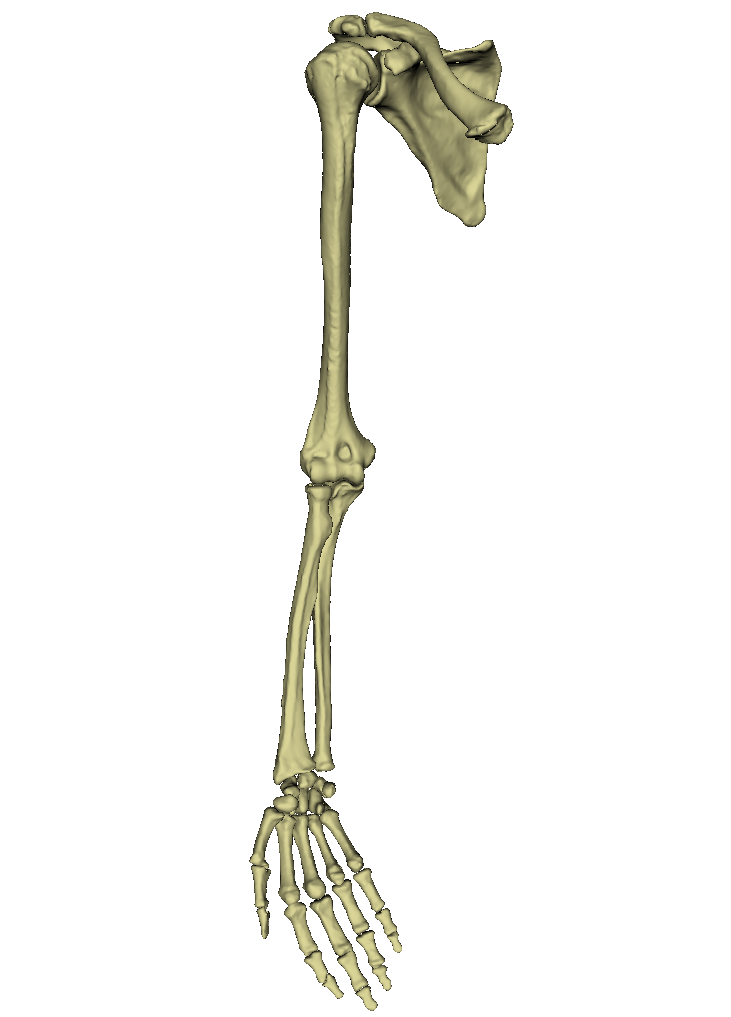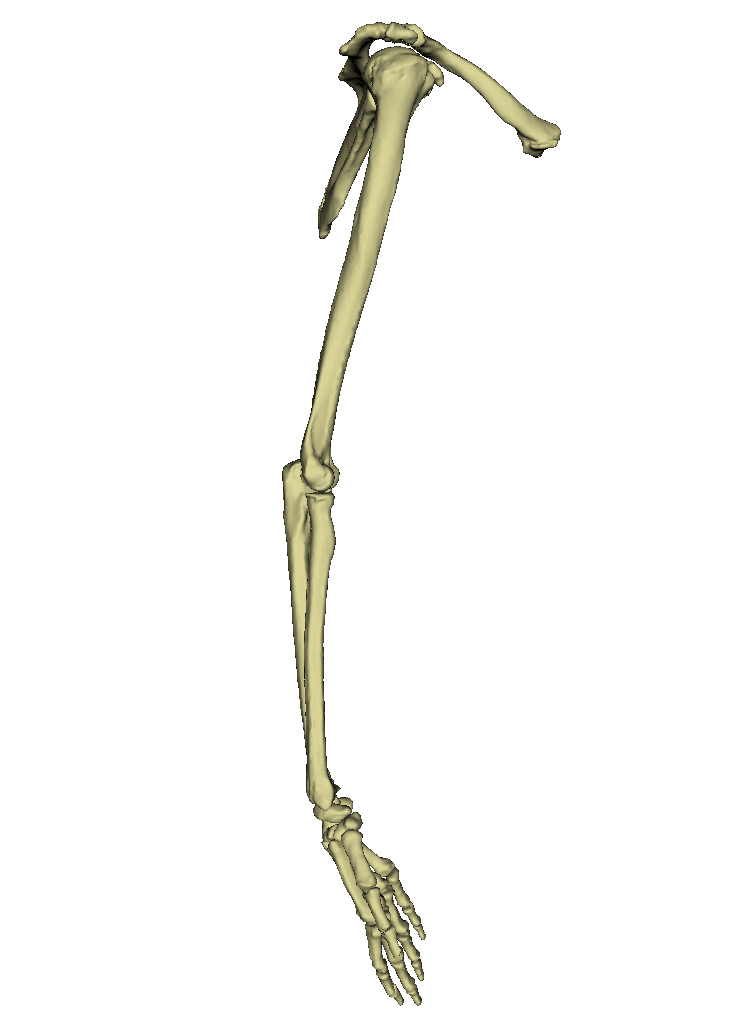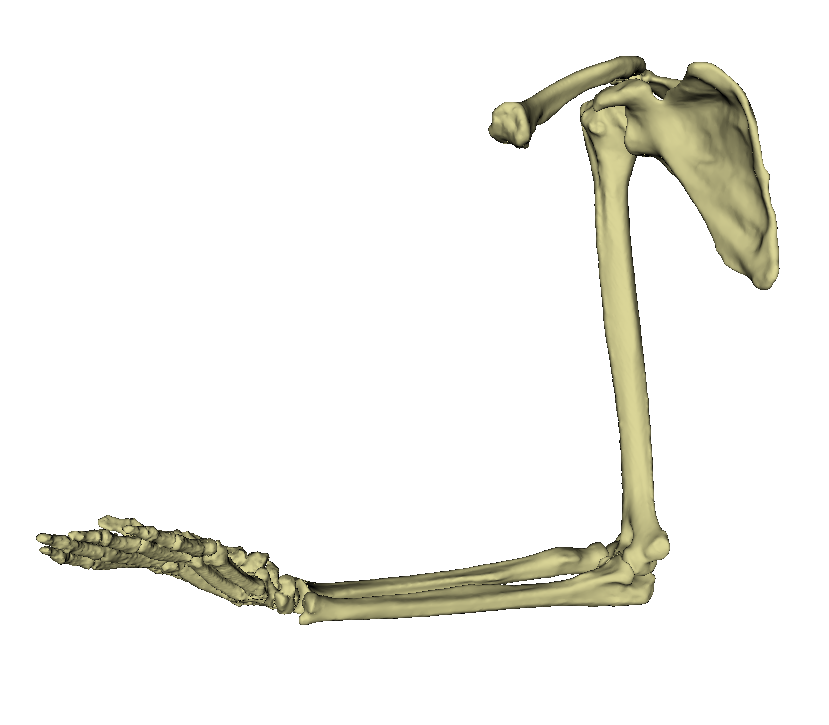Knochen Obere Extremität/en: Unterschied zwischen den Versionen
Aus Dornheim Anatomy
(Übernehme Bearbeitung einer neuen Version der Quellseite) |
(Die Seite wurde neu angelegt: „The combination of the bones from Shoulder Belt and the free limb form the skeleton of the upper extremity. Here, the s…“) |
||
| Zeile 2: | Zeile 2: | ||
<div style="text-align:justify;"> | <div style="text-align:justify;"> | ||
| − | + | The combination of the bones from [[Special:MyLanguage/Schultergürtel|Shoulder Belt ]] and the free limb form the skeleton of the upper extremity. Here, the shoulder girdle consists of the [[Special:MyLanguage/Schlüsselbein|Clavicles]] and the [[Special:MyLanguage/Schulterblatt|Shoulder blades]]. It forms the connection of the arm to the [[Special:MyLangugae/Rumpf|Trunk]]. The [[Special:MyLangugage/Oberarmknochen|Humerus (humerus)]] represents the longest bone in this region. It is followed by the [[Special:MyLanguage/Unterarmknochen|Humerus (Radius and Ulna)]]. The [[Special:MyLanguage/Handknochen|hand bones]] are divided into the <i>metacarpal bones</i>, <i>carpal bones</i> and <i>finger bones</i>. The free upper extremity is divided into brachium (upper arm), antebrachium (forearm) and manus (hand). The hand itself is also subject to a structural three-division into carpus (wrist), metacarpus (middle hand) and phalanges (finger end members). | |
<div style="background-color:#FFFFFF"> | <div style="background-color:#FFFFFF"> | ||
| − | <ul class="center"> <li class="mw-ui-button button_new">[[Special:MyLanguage/ | + | <ul class="center"> <li class="mw-ui-button button_new">[[Special:MyLanguage/exercise tasks|exercise TASKS]]</li></ul></div> |
<div style="background-color:#ddd7c0> | <div style="background-color:#ddd7c0> | ||
---- | ---- | ||
Version vom 26. Mai 2020, 08:02 Uhr
The combination of the bones from Shoulder Belt and the free limb form the skeleton of the upper extremity. Here, the shoulder girdle consists of the Clavicles and the Shoulder blades. It forms the connection of the arm to the Trunk. The Humerus (humerus) represents the longest bone in this region. It is followed by the Humerus (Radius and Ulna). The hand bones are divided into the metacarpal bones, carpal bones and finger bones. The free upper extremity is divided into brachium (upper arm), antebrachium (forearm) and manus (hand). The hand itself is also subject to a structural three-division into carpus (wrist), metacarpus (middle hand) and phalanges (finger end members).
- Zugehörige Strukturen:
- Übergeordnete Strukturen:




